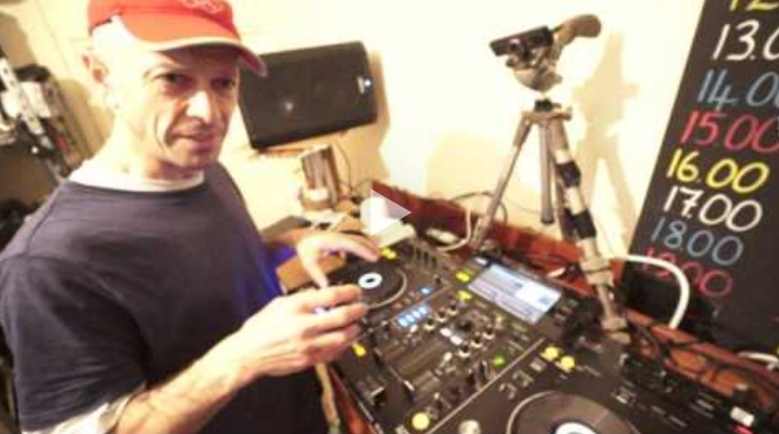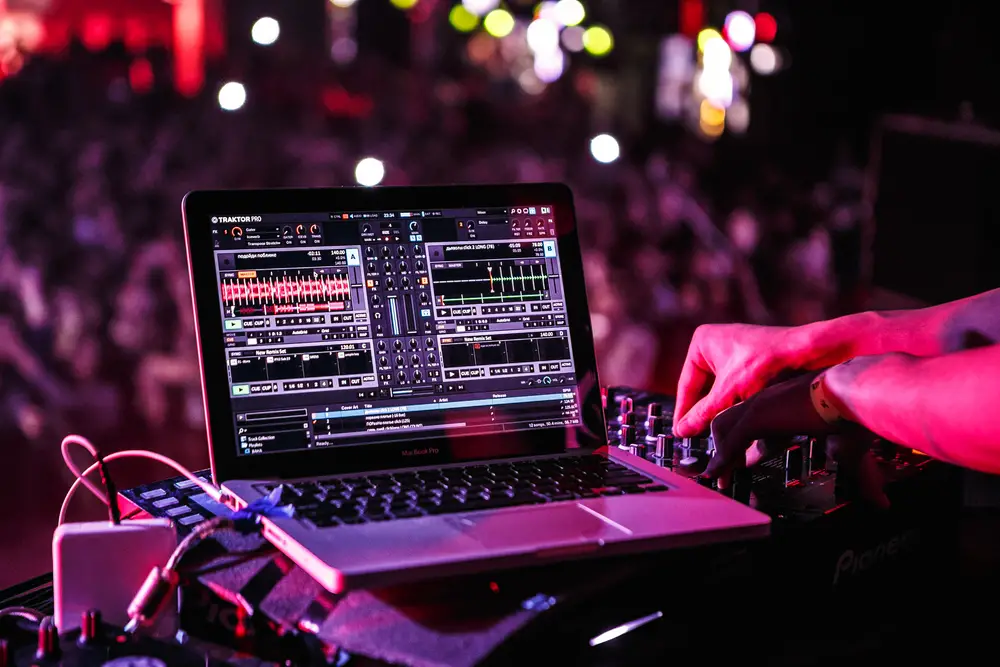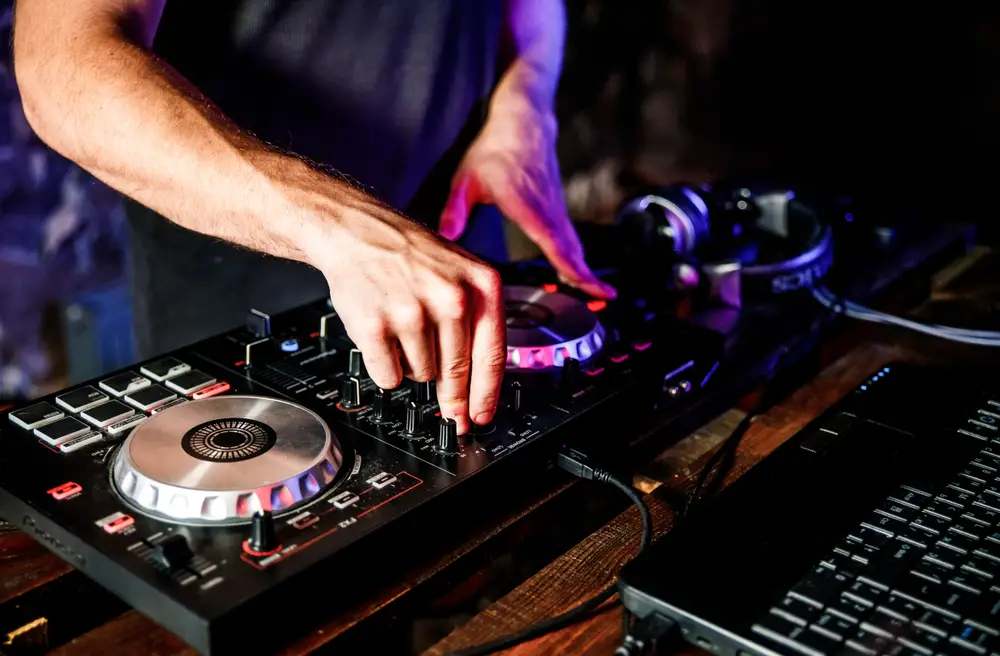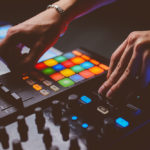Mixing is a skill that often seems really easy to the untrained eye and many people who want to get into mixing can often struggle to understand the ins and outs of what is happening and which techniques are important or genre-specific.
Disco music comes with its own genre-specific features that make it different from mixing other genres. Disco music is probably one of the oldest genres that have been mixed on turntables, most DJs from the turntable era were mixing Disco music.
So, Disco music has a lot of vinyl recordings of the old classics, and also more house-oriented edits of older tracks as well as fresh material.
Read on if you want to learn more about mixing Disco music.
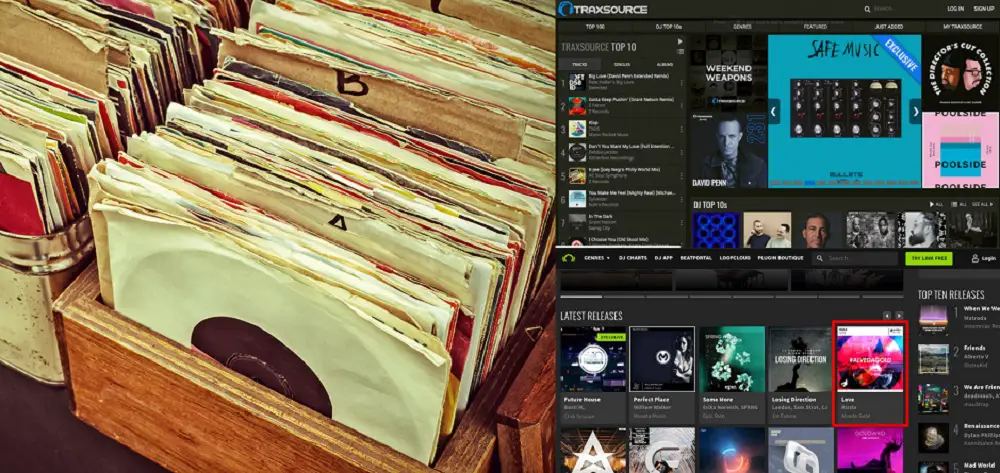
Where Do Disco DJs Get Their Music?
One important thing to be aware of is that classic Disco music is often originally a vinyl recording that has been converted into a digital file format such as FLAC, wav or mp3.
So if you are a vinyl DJ you can directly mix with classic Disco records, whereas the digital DJ will have to rely on digital file conversions of these vinyl records.
Oftentimes, the DJs who want to mix the classics opt to mix solely on a vinyl turntable so that they get the best sound quality.
If you are mixing digitally it can be hard to find good quality digital conversions of vinyl records. This often leads to people pirating old Disco records from places like YouTube, but this will ruin your sound quality and won’t support the artist.
Some classics will be available on sites such as Traxsource and Beatport where the owner of the song’s rights, usually the record company, will release the still popular classics.
Beyond the classics, there are a wealth of new Disco tunes made by smaller independent DJs, some even chose to create new edits of old classics, making them more modern by adding house basslines and effects.
These newer songs will be available digitally so that more people can buy and use the songs.
Being Aware Of Beatgrids And Phrasing
A beatgrid is the visual representation of the song’s phrasing and structure on your chosen mixing software. Usually, a DJ will alter these beatgrids within the software so that it matches the song’s phrasing.
Being aware of beatgrids can really push your DJing to the next level but is especially important with Disco music for many reasons.
If you are mixing the classic tracks digitally, then you need to make sure the beatgrid is correct for that song’s phrasing so that you can easily mix it into the next song and keep the song in time.
This is particularly important with disco music because the bassline, and general instruments, will be played by a real bass guitar rather than a digitally created bassline.
This often means the tempo could be more irregular and even the volume may change depending on how hard the string has been hit. This isn’t an issue with digitally created songs.
Often, the drums in disco are human instrumentation as well. This can throw off the rookie DJ as it requires more of a keen ear to keep time and transition songs into each other.
Some DJs opt for looping a phrase so that they can gain some repetition to make their transition into the next song more smooth.
An awareness of phrasing and having correct beatgrids will be really important as the song structure of these classic Disco tracks is a lot different from modern dance music.
These classic tracks won’t have extended intros and outros or breaks that are purposely put in by artists who create a song specifically for mixing.
Don’t be afraid to let a song play out a little rather than rushing to mix it quickly. Quick transitions are cool, but when you have a 6-7 minute disco song that is mainly vocals you need to know when the perfect spot is to mix another track.
Wait for the outro where the vocal cut out, or loop a fill or break down.
In any case, people love singing along and Disco music isn’t very repetitive like Techno is, for example, so a lot of the enjoyment of disco music is in dancing along to a song and following its phrasing.
So constantly changing the tracks could throw people off their dancing.
Phrasing is doubly important in disco music then as it can be helpful to know when the breakdown and fills are as these are the perfect pockets where you can introduce a new song.
Some DJs will opt to ‘chop’ into a song rather than create a smooth transition. Chopping is when you completely take one track out and immediately chop into the new song, perhaps utilizing a wheel spin or some form of digital effect.
So you should always keep an eye on the beatgrids and the phrasing of these songs within your chosen mixing software as the Disco genre has more instrumentation than other genres, which can throw off the beginner DJ.
Using Key
As mixing Disco music can require the use of non-conventional mixing techniques, being aware of key is super important.
As you are chopping into tracks or conceding that the phrasing may potentially be off due to unquantized music, making sure the two songs are in key can be really important to keep some level of harmony.
Quantizing
When mixing Disco music digitally, it is worth being aware of quantizing. Some Disco songs, when translated from vinyl to a digital file format, can be unquantized.
This means that the beats of the song are not restricted by the digitally created beatgrid, making it hard to keep in time with the other channel.
There are certain techniques that will help keep a song in time while you transition into another song.
One technique used by traditional and modern DJs is the ‘push and nudge’ technique which involves touching the wheel in time with the music so that the beat starts to match.
This technique is essentially a manual way of quantizing the music by physically moving the beats into time so they sound quantized. This technique can take some getting used to but is worth trying even for beginners.
Let The Bassline Lead You
As explained, the baselines in disco music often lead the track due to their instrumentation. For any Disco DJ it is important to let the bass lead the song, this means that you don’t want the bass to clash with another song.
You need a good awareness of the song’s phrasing, knowing that the bassline starts and stops, so that when one bassline stops you can introduce a new one.
As tracks with instrumentation are more irregular than digitally created instrumentation you have to keep more of an eye on them. However, it is this irregularity that makes the basslines in Disco music so groovy and dance-worthy.
It is this groove that often drives Disco music.
Watch And Listen To The Professionals
Even if you are set on mixing the classic tunes on turntables it can still be helpful to listen to the digital re-edits, and vice versa. This gives you a history of the genre but also gets a taste for instrumentation, or digital drum machines.
If you want to mix classic Disco, but the quantizing and phrasing is throwing you off as a beginner, try mixing Disco house.
Disco house incorporates the more repetitive elements of house music to bring more structure to the Disco genre so that Disco can be mixed with other genres such as House.
Disco House will have a lot more repetition and the basslines will often be quantized so that it can mix with normal House music, this makes it a lot easier for the rookie.
The rookie can then build up a mix of both Disco House and classic Disco songs rather than attempting to mix classic vinyl tracks which can be really hard even for professionals.
Watching professional DJs mix Disco music can also help you learn how to mix the genre, even just listening to their tracks. Todd Terry and Franki Knuckles are two great classic Disco DJs who helped pioneer what we recognize as House music in the modern world.
If you want a more house oriented Disco that utilizes modern production methods, Dan Shake, Todd Terje, and Gerd Janson are all great places to start and who have their own mixes, so listen to how they transition and choose each of their tracks – you might find some new tunes to use too!
Final Thoughts
So, the main thing to be aware of with Disco music is that the classic tracks are often unquantized and irregular and require a well-rounded knowledge of your songs: their phrasing, key, and structure are paramount for smooth transitions.
You need to be well aware of the reasons why Disco music can be tricky so that you can find your own ways around these potentially problematic song structures.
The more modern remixes and edits of the Disco House genre can be an easier place to start for beginners and can build them up to the 6-minute classics.
We hope you love the products we recommend. We may collect a commission if you purchase through one of our links. This doesn't cost you anything extra. If you do, thank you! As an Amazon Associate, I earn from qualifying purchases.

